About The Bluegrass State
For People Interested in KY!

Everything You Need To Know About Kentucky
Kentucky is often referred to as the Bluegrass State, often touted as the country's southeastern gem, with iron-willed people who don't mind getting their hands dirty. The state offers a blend of Midwestern hospitality and southern culture across several industries.
It has the world's best Bourbon, the bluegrass music is second to none, Kentucky Fried Chicken is consumed the world over, Mutton BBQ is the best you'll find in the state, and it is also home to thousands of college basketball fans.
It is also a state known for its high-spirited residents and comparatively cheap living, with a dash of good ol' southern culture that's hard to find anywhere in the US. While it is a winning combo, attracting thousands of tourists to the state each year, there is more to Kentucky than all of this.
In this article, we'll examine the history and culture of the Bluegrass State. Its evolution from being grated Statehood to it being one of the more livable places in America.
- When Did Kentucky Get Statehood?
- How's The Kentucky Economy?
- What's Kentucky Geography Like?
- What Are The Major Cities In Kentucky?
- What's The Kentucky Climate Like?
- What's The History Of Kentucky Native American Settlements?
- What Are KY Natural Attractions?
- How's The Civil-Rights Movement In KY?
- What's The History Of Slavery In Kentucky?
- How Is Kentucky Politics?
- What's The Culture Like In Kentucky?
- What's The Kentucky Derby?
- What's The Cost of Living In Kentucky?
When Did Kentucky Get Statehood?
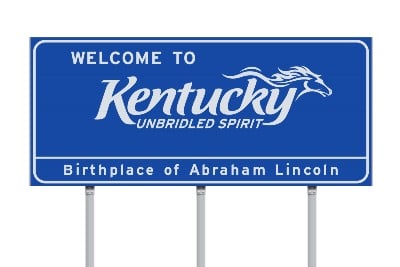
Founded in 1783, Kentucky is the Southeastern U.S. state bordered by the Ohio River north and the Appalachian Mountains east. Its largest city is Louisville, home to the Kentucky Derby, which takes place at Churchill Downs on the first Saturday in May. A two-week festival precedes the Derby. The Kentucky Derby Museum and other attractions celebrate the race throughout the year.
The first convention for Kentucky statehood was held in 1784. At the time, the country was negotiating a treaty with Spain, which had closed the river to American commerce. Kentucky had its own opinion on statehood and fought to get it. In the process, it negotiated and petitioned with Virginia, claiming independence. Though statehood was never fully achieved, the debate over Kentucky continued to rage for decades. Its eventual success was the product of a series of negotiations and legal battles.
Before becoming a state, Kentucky was a territory of the British. Its constitution was based on the democratic constitution of Pennsylvania. Despite this, Kentucky was admitted to the union on June 1st, 1792, and is the 15th state of the union. However, this fact does not make it any less important than its founding date. This is essential to understand when thinking about why Kentucky was admitted to the union, as its name is not an indication of statehood.
The earliest settlements in Kentucky date back to the 1700s. Dr. Thomas Walker discovered the Cumberland Gap in 1750. Later, Daniel Boone settled at Boonesborough, widening the Wilderness Trail from Virginia.
Kentucky became a slave state in the early 1800s, and its capital city, Louisville, is an important center for American history. In the following century, it became the site of several important events, from the founding of America to the Civil War.
How's The Kentucky Economy?
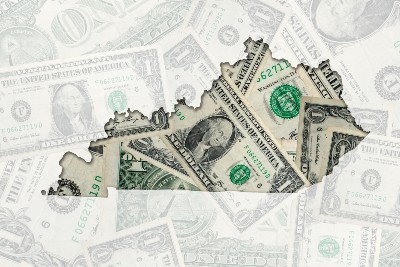
Manufacturing remains the state's largest industry, contributing nearly one-fifth to its GDP. The state's manufacturing workforce accounts for almost a quarter of the population, and employees earn nearly $44,000 a year or almost double the state's median income.
Additionally, manufacturing jobs are concentrated in Louisville, where workers produce auto parts, food, and other products. Kentucky's manufacturing sector employs more men than any other industry in the state, with nearly three times as many male workers employed in manufacturing positions as female employees.
The latest ranking of the states' economies revealed that Kentucky has the best economic growth potential, thus Kentucky small business insurance industry is growing. It ranked seventh among states in terms of exports per capita and 15th for growth in the ratio of full-time to part-time jobs.
Meanwhile, the state ranked 47th for its median household income and forty-oneth for unfunded public pension plans. Further, the state's fiscal health, the share of STEM jobs, and median household income are below average.
Arts activities play an essential role in the Kentucky economy. Arts-related employment generates income for artists and performing arts centers, and participants spend this money on goods and services.
Arts-related businesses also benefit from a growing number of people who spend on art. More than 1.1 million Kentucky residents attended arts events and performances last year, and more than $9.3 million of income was generated by arts-related businesses in the state.
Performing arts organizations in Kentucky also help stimulate the state's economy by employing local artists.
What's Kentucky Geography Like?
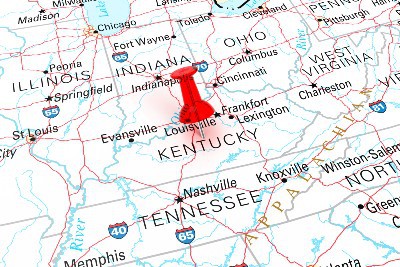
The topography of Kentucky varies from region to region. In the northwest, there is a region of rolling uplands and floodplains bounded by the Mississippi, Ohio, and Tennessee rivers. This area is referred to as the Jackson Purchase after the seventh President of the United States, Andrew Jackson. The area is also one of the largest bird flyways in the U.S., thanks to its diverse wildlife and ecosystems. While essentially flat, the state's terrain is somewhat varied.
The Appalachian Plateau, which stretches from New York to Alabama, makes up a large portion of the state's eastern third. This land is home to Kentucky's highest point, Big Black Mountain, and is also the state's border with Virginia.
Eastern Kentucky has a mountainous area called the Cumberland Plateau, which is deeply dissected, mainly composed of steep pinnacles and transverse ridges. Water gaps provide natural passages through the mountain mazes. Many of the mountainous regions are coalfields, including the Great Eastern Coalfield.
The soil in the state of Kentucky is just as varied as the landscape. The weathered shale soils of the Knobs are not as rich in nutrients, making them better suited to forestation than growing crops. Loessial soils cover much of the land, and rich alluvial deposits along the rivers are common. The soil in Kentucky is the result of long-term decomposition and breakdown of the underlying rock.
What Are The Major Cities In Kentucky?
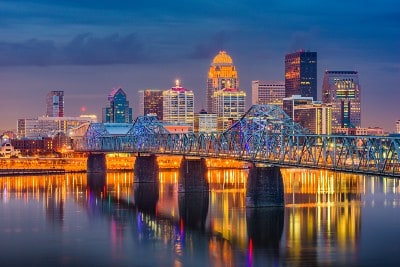
Kentucky is a southeastern state bordered by the Appalachian Mountains to the east and the Ohio River to the north. Frankfort is the state capital, and Louisville is the largest city.
Louisville
Louisville has a population of approximately 4.4 million, making it the state's most populous city, with an estimated population of 615,366.
Lexington
The Lexington-Fayette urban county is the state's third-largest city, with a population of 314,488.
Other KY Cities
Other major cities include Owensboro, Bowling Green, Hopkinsville, and Paducah. The state's 14th largest city, Frankfort, has a population of 28,595.
What's The Kentucky Climate Like?
The climate of Kentucky is mild and temperate, with average annual temperatures between 55 and 60 degrees Fahrenheit. However, there are occasional highs of 110 degF and cold snaps of -30 degrees Fahrenheit.
Louisville typically experiences low-to-mid-sixties in winter and high-seventies during the summer. Kentucky experiences approximately 45 inches of rainfall annually.
What's The History Of Kentucky Native American Settlements?
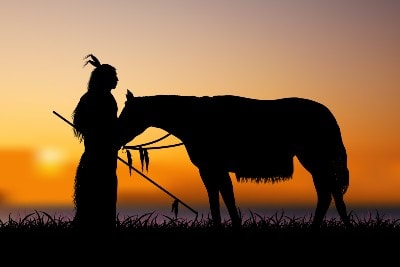
The history of American Indian settlements in Kentucky dates back to time immemorial. When Kentucky became the fifteenth state in 1792, more than twenty tribes held legal claims to the land. They included the Yuchi, the Mingo, and the Yamacraw. However, they did not have permanent settlements in the state. Regardless, their cultural influence is evident in the landscape of western Kentucky.
Some of the native American tribes living in Kentucky included the Cherokee, Mohawk, Onondaga, Cayuga, and Senecas. These peoples spread through alliances and reached deep into Kentucky. They left behind their pictographs, petroglyphs, mud glyphs, stone tools, and sculptures.
Filson's myths fueled arguments about whether American Indians lived in Kentucky. His historical accounts, for example, painted Kentucky as a land that was a middle ground between all the tribes and a scene of bloody disputes. Filson was a land speculator and an opportunist investor, and he shaped the state's history by creating myths about Native American settlements. That's one of the reasons why Kentucky's true Native American history is still somewhat of a mystery.
What Are KY Natural Attractions?
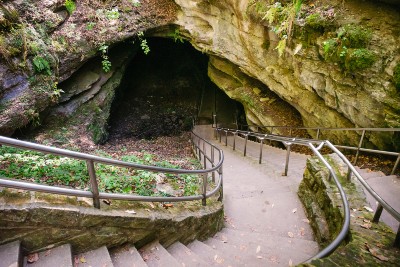
A visit to Kentucky should include the southeastern state's natural attractions. This southern state is bordered by the Ohio River on the north and the Appalachian Mountains on the east. Its largest city is Louisville, home to the famous Kentucky Derby.
Another natural attraction in Kentucky is the Mammoth Cave. This cave system is the longest in the world and is fascinating to explore. You can take guided tours or choose a walking or crawling tour. There are tours available for people of all ages and fitness levels so that anyone can take part.
In addition to the mammoth cave, the Kentucky area offers several other popular outdoor attractions.
The Blackfish Bison Ranch is another great destination in the state. And if you'd prefer to spend time outdoors, you can explore the Lower Howard's Creek Nature Preserve.
How's The Civil-Rights Movement In KY?
The Civil-rights movement in Kentucky is a story of social justice and inequality. The state is home to more than 120 historic sites, many of which commemorate individuals and organizations who fought for social justice and equality for African Americans. In Louisville alone, there are more than 100 historic sites. Whether you're a history buff or simply curious about this region's history, you'll find plenty to explore.
The Civil Rights Act of 1964, enacted by the General Assembly, bans discrimination in public accommodations and employment. Local governments are empowered to pass local housing discrimination laws. The state legislature repeals 'dead-letter' segregation laws.
Louisville Republican Rep. Jesse Warders was elected as the first black member of the General Assembly. The Louisville Courier-Journal later hired the first African-American news artist. Aubespin became an expert on racism in the media and later became president of the National Association of Black Journalists.
It was a sign that the shackles of discrimination were finally eroding and continued to erode to this day. Making Kentucky one of the more progressive states in the country.
What's The History Of Slavery In Kentucky?
Slavery was a significant part of Kentucky's history for more than two hundred years. It began even before the state became a state when the earliest settlers tamed the wilds by bringing human property with them.
Kentucky's Article IX made it clear that slavery can only be abolished with the consent of the owner or with compensation for emancipation. Kentucky voted to stay in the Union during the Civil War, but many white citizens fought to keep the institution and the wealth it provided.
Slavery in Kentucky state history has a complex issue, with many aspects of the practice affecting the lives of the individuals and communities to this day. This state is not the only one that had enslaved people, as there were many others, mainly profiting off their so-called human property.
Slavery, even after the civil war, was a social institution, and the myth of black inferiority was used to justify the practice helping perpetuate the problem.
How Is Kentucky Politics?

A quick look at the history of Kentucky state politics reveals a surprisingly conservative political streak. In the 1960s and 1970s, "ancestral Democrats" often voted Republican in general elections and remained registered as Democrats.
In the 2016 election, Republicans won a majority in the state house for the first time in almost a century, and Democrats are seeing their voter registration numbers drop for the first time since the Civil War era.
The Democratic Party has dominated Kentucky state politics for nearly a century. In fact, since 1924, Democrats have won Kentucky 12 times, and Republicans have won the state ten times. Only two Democratic presidential candidates have received more than 50 percent of the vote in Kentucky. A recent poll revealed that Kentucky is the only state to have voted for a Republican candidate in four of the last five presidential elections. While this trend may seem counterintuitive, it is the reality.
What's The Culture Like In Kentucky?
The name Kentucky comes from a Native American tribe, the Iroquois. The first settlers to settle the state were white settlers led by Daniel Boone. He is known for his pioneering spirit. Kentucky's laid-back, easy-going culture celebrates outdoor recreation, legendary bourbon, and the rich horse racing tradition.
Kentucky's culture is rich in music, crafts, and folk arts. The state is home to the largest concentration of Roman Catholics, Methodists, and Baptists, although the Eastern religious groups are smaller here.
The state's residents are also known for their laid-back attitude, and you'll find them friendly and unhurried - unlike people in other parts of the Northeast. The official language in Kentucky is English, and the state's Spanish-speaking population is small but growing steadily.
The University Press of Kentucky has a long-standing membership in the Association of University Presses, previously known as the Association of American Universities Press. Staff members have also served on AUPresses committees.
In addition to these scholarly publications, the UPK has forged relationships with various state and community partners, such as the Kentucky Humanities Council, the Kentucky Arts Council, the Bluegrass Trust, and the Frazier History Museum.
Kentucky's rural landscape remains unspoiled, but the state has a couple of notable urban centers. In Louisville, horse farms creep up to the edge of downtown. In addition to horse breeding and racing, Kentucky is famous for its bourbon.
The people of Kentucky love the outdoors, and there are several opportunities to camp, hike, and explore. Horse racing and other activities are widely popular in the state.
The food and drinks of Kentucky are diverse and distinctive. The cuisine of Kentucky is part of southern cooking, but some regions also incorporate elements of the Midwest and the South. The original Kentucky dish, the "Hot Brown," is layered toast topped with turkey, bacon, tomatoes, and mornay sauce. The Kentucky Headhunters, the Montgomery Gentry, and the Halfway to Hazard are just a few of the musical acts from this state.
UPK's editorial program emphasizes social sciences and humanities. Some of its titles have earned national recognition in film, military studies, and agriculture. Books from the University Press of Kentucky are widely distributed through retail channels, libraries, and online platforms. There's also a free download option for individuals who don't live in Kentucky.
What's The Kentucky Derby?
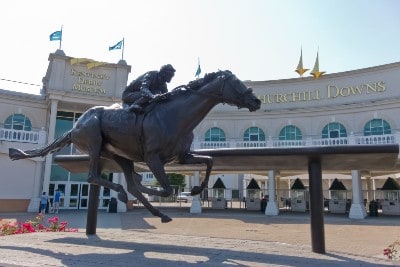
The Kentucky Derby is a horse race held annually in Louisville, Kentucky, United States. It is graded as a Grade I stakes race for three-year-old Thoroughbreds. The race takes place over one and a quarter miles at Churchill Downs.
This event attracts thousands of spectators each year, not only from across the state but from across North America and even intentionally.
In 1925, Bill Corum coined the popular nickname "Run for the Roses." The tradition of draping red roses over the winning horse dates back to 1932. In addition to the roses, the Derby is accompanied by a popular song - "My Old Kentucky Home" by Stephen Foster. The race's official theme is played as the horses enter the track.
Before the Kentucky Derby, horses must first compete in designated prep races. Top finishers earn points for their chance at the Derby. The top four finishers are awarded points, and the next 20 earn a spot in the race. The Triple Crown winner must also win the Kentucky Derby and Belmont Stakes to become a Triple Crown Winner.
In addition to being the oldest race in the world, there are several notable women who have ridden in the Kentucky Derby. Diane Crump was the first woman to ride in the Kentucky Derby. Rosie Napravnik finished fifth aboard Mylute in 2013 but was last in 2014.
Many women have also owned or raced horses in the Kentucky Derby. In 1904, Laska Durnell owned Elwood and raced it to victory. Other notable female owners include Helen Hay Whitney, Elizabeth Arden Graham, Ethel V. Mars, Penny Chenery, and others. In 2016, Frances Genter became the oldest Derby winner with her 92-year-old horse Unbridled.
The Kentucky Derby has been running continuously since 1875. It is held annually on the first Saturday of May. Despite the Great Depression and World Wars, it continued to be held on the same date every year. The race will continue to run as long as Kentucky has been around.
When you are a Kentucky Derby fan, you know there is nothing like the real thing. It's the first race of the year, and there's nothing quite like it.
For the most part, the Kentucky Derby is the only major event in the United States devoted to horse racing. While the Derby is a prestigious event for many, the weather is unpredictable, so spectators need to be prepared for all types of weather.
The Kentucky Derby is the most watched horse race in North America. People are expected to dress to impress and look their best. Ladies typically wear elaborate hats as part of their outfits.
What's The Cost of Living In Kentucky?
The state of Kentucky is known for its affordability, with its lower cost of living. Compared to other large southern cities, the cost of living in the towns like Lexington is comparatively low. However, prices in Louisville, a cosmopolitan center, are closer to the national average. According to the Council for Community and Economic Research, living in Kentucky is cheaper than in nearby Tennessee, West Virginia, and North Carolina.
However, transportation costs can also be high, depending on how much you commute.
The state has lower property taxes than other states. Although property tax rates vary by area, the state's median rate is 0.86%, which makes it an affordable place to live for both renters and homeowners. Additionally, landlords pass the savings on to tenants and homeowners.
On a nationwide scale, the cost of living in Kentucky is $36,574 per year, which is roughly much lower than the majority of places in the US. It is one of the cheapest states in the country and the third most affordable in the Southeast.
However, living in a small town or city tends not to be for everyone, and for these reasons, many people choose to live in a big city.